Oyster Catcher Rattle Item Number: 05.273 from the Brooklyn Museum
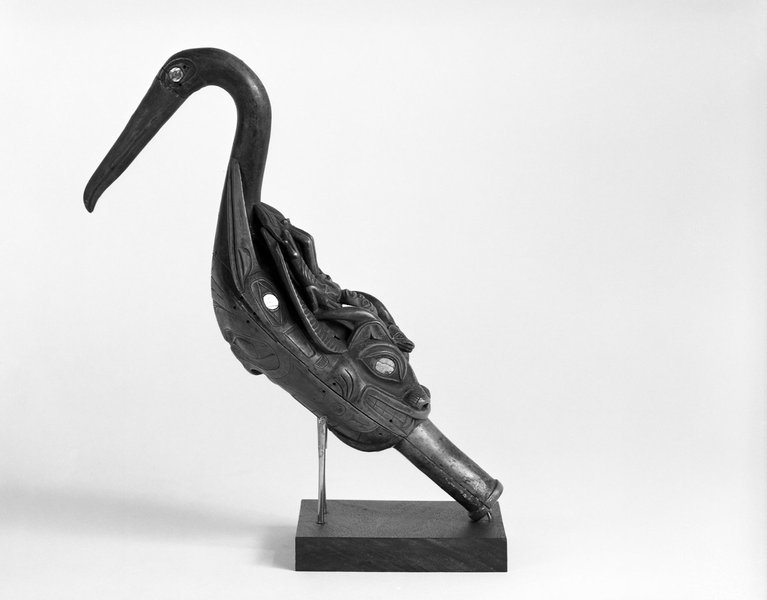
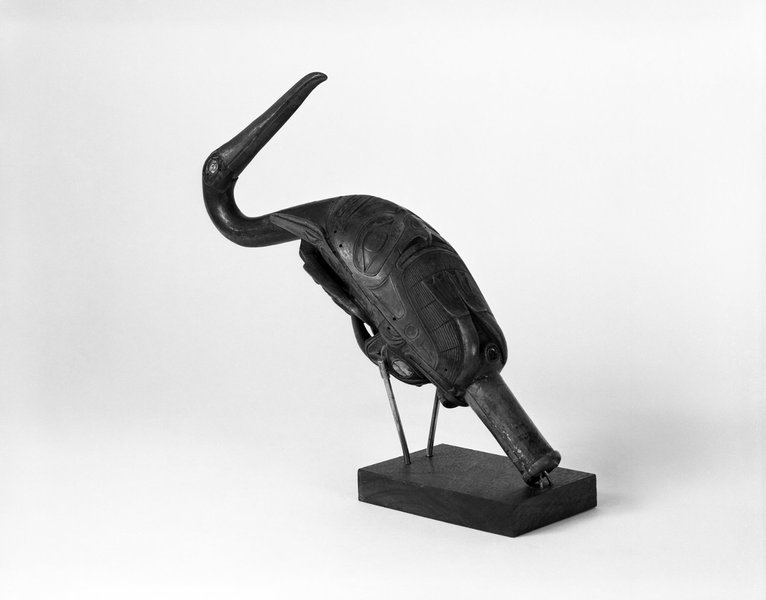

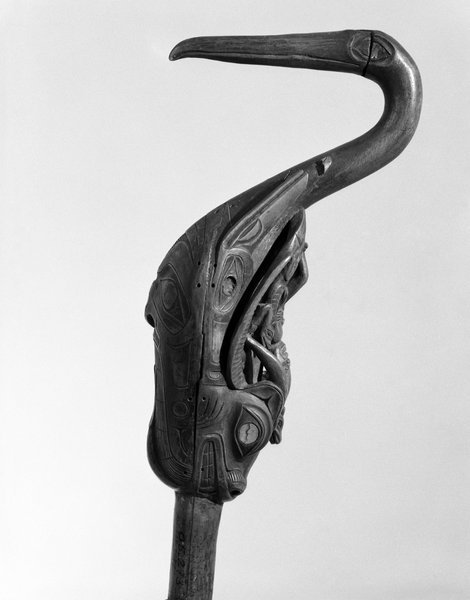
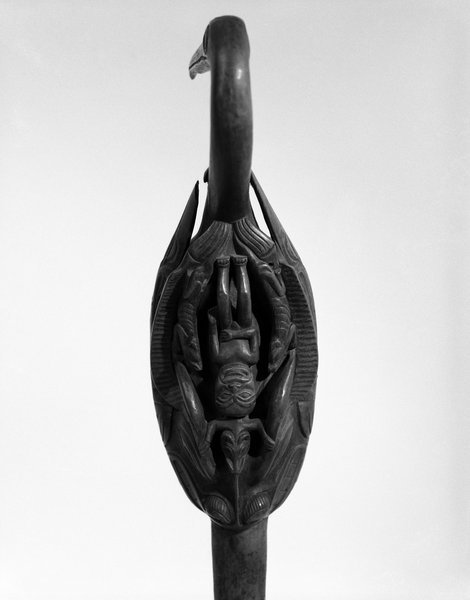
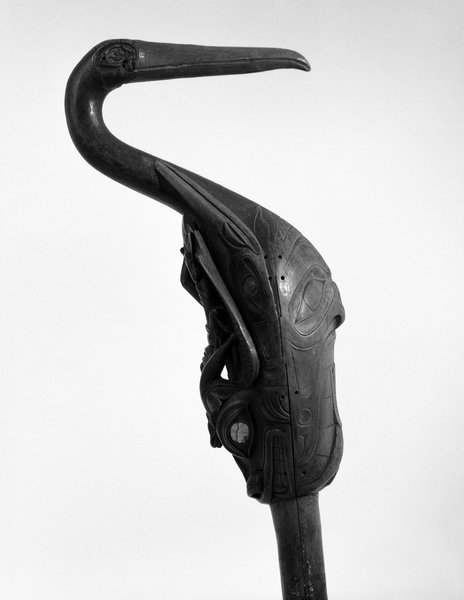
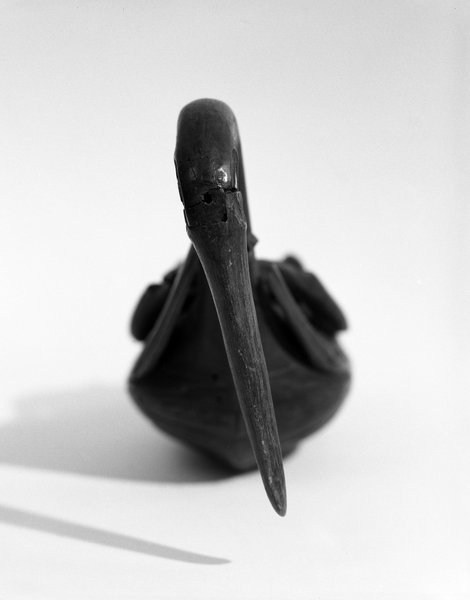
Description
Chief's or shaman's rattle of carved wood with abalone inlay. Long billed bird with possibly the shaman himself riding on the birds back, the back has become a land otter with a long tail. The tail ends as if it is a monster face at the land otters tail and horns take the place of ears. The underside of the rattle has a beaked bird with web feet upturned. Koskimo location is now called Tla-o-qui-aht. This was once catalogued as depicting the legend of Ka-ka-tete,[Ka-tia-hete] the whistling demon. Examined by Bill Holm 11/71 and called the finest example of its kind. Condition: Thongs holding it together are gone, now glued. Three abalone eyes gone. Tlingit attribution based on stylistic evidence. Original attribution was Kwakwaka'wak. This acession number assigned to it in c. 1930 when first record was made.
Credit Line
Brooklyn Museum Collection
Label
Rattles are shaken by a shaman over an afflicted person’s body or left with the patient for protection. This example depicts a long-billed bird called an oyster catcher, thought to be a transformative animal because it lives in the sky yet dives beneath the water for sustenance. Riding on the bird’s back is a shaman who is being transformed into a land otter with a long tail terminating in a horned monster face. The bird’s webbed feet are carved on the underside of the rattle.
Las maracas son sacudidas por un chamán sobre el cuerpo de la persona enferma o se dejan con el paciente como protección. Este ejemplo muestra un ave de largo pico llamada cazador de ostras, el cual se cree es un animal de transformación ya que vive en el cielo, pero bucea bajo el agua para conseguir alimento. Cabalgando a espaldas del pájaro se ve a un chamán que se transforma en una nutria de cola larga terminada en una cara monstruosa con cuernos. Los pies palmados del ave están tallados al reverso de la maraca.
Item History
- Made between 1868 and 1899
What
- Name
- Oyster Catcher Rattle
- Identification Number
- 05.273
- Type of Item
- oyster catcher rattle
- Material
- wood and abalone shell
- Overall
- length 9.0 in, width 13.0 in, height 5.0 in
Who
- Culture
- Tlingit
Where
- Holding Institution
- Brooklyn Museum
When
- Creation Date
- between 1868 and 1899
Other
- Location
- Arts of the Americas Galleries, 5th Floor
- Classification
- Musical Instrument